- Home
- Peter Ackroyd
Albion: The Origins of the English Imagination Page 3
Albion: The Origins of the English Imagination Read online
Page 3
It was remarked of Thomas Hardy, in 1883, that he “is never more reverent, more exact, than when he is speaking of forest trees.” The tree represents life itself, and his characters are often identified by it. There is, for example, Gabriel Oak in Far from the Madding Crowd. In The Woodlanders, Hardy himself dwells upon the “runic obscurity” of the language of trees, yet “from the quality of the wind’s murmur through a bough” the local inhabitants could name its species. In Far from the Madding Crowd, humankind “learn how the trees on the right and the trees on the left wailed or chaunted to each other in the regular antiphonies of a cathedral choir.” It is not difficult to understand, therefore, how the trees of the ancient landscape became images of British liberty and of primitive Christianity itself.
When Tess of the D’Urbervilles remarked that the trees had “inquisitive eyes” she was exclaiming upon that same preternatural insight which the “Tree of Truth” possesses in nineteenth-century pantomimes; whenever a character told a lie, a large acorn fell upon his or her head. When Jane Eyre accepts Rochester’s fanatical passion, “little Adele came running in to tell me that the great horse-chestnut at the bottom of the garden had been struck by lightning.”
The folklore of England has many interesting ramifications. When in 1922 D. H. Lawrence wrote that “I would like to be a tree for a while,” he was expressing his need for deep and yet deeper absorption into the earth; it represents that descent into the layers of past time which is very like the journey into his own inner self where all unacknowledged fantasies and unknown powers lie hidden. That is why, in ancient poems, the woods are places of refuge and sanctuary. When Will Brangwen, in The Rainbow, carved two angels out of wood they “were like trees.” In Blake’s “A Vision of the Last Judgement,” Jehovah is “The I am of the Oaks of Albion.” So the tree grows through the literature of the English.
CHAPTER 2
The Radiates
In “A Letter to a Friend upon Occasion of the Death of His Intimate Friend,” composed in the 1670s, Sir Thomas Browne noticed the change in the human countenance just before death; the man about to die began to resemble his uncle “the Lines of whose Face lay deep and invisible in his healthful Visage before.” Thus before our mortal end “by sick and languishing Alterations, we put on new Visages: and in our Retreat to Earth, may fall upon such Looks which from community of seminal Originals, were before latent in us.” Our ancestors shine through at that moment of quietus and we are but a palimpsest of past times.
And is this the condition of the world itself? As the lachrymose eighteenth-century poet Edward Young asked, in his Conjectures on Original Composition, “Born originals, how comes it to pass that we die Copies?” It is a question of absorbing interest for those who contemplate the persistence through time of certain patterns of behaviour or expression. It has often been remarked how the inhabitants of the Scottish Highlands retained such a primitive way of life that they remained in the ninth century for many hundreds of years. But more unequivocal evidence was discovered in Gough’s Cave, Cheddar Gorge. Here was found the skeleton of a man who had expired at some moment in that great expanse of time known as the Middle Stone Age; his mitochondrial DNA was subsequently tested, and a close match found with a history teacher residing in the late twentieth-century Cheddar village. Thus a genetic link can be directly established over a period of approximately eleven thousand years. But can it also pose a question of place, rather than of tribe or family? Can dwelling become a form of indwelling or imaginative life? To attempt to elucidate the characteristics of the English imagination over a period of two thousand years may not then be a futile or unworthy task.
For over one thousand years the Celtic tribes were established all over England; these separate British tribes, or kingdoms, or civitates , survived in situ from the pre-Roman Iron Age to the sub-Roman period and the Saxon invasions. Their verses of prophecy and legend remain in the Irish, Welsh and Cornish vernaculars but in no other source. While extant inscriptions and symbols “make it certain that sub-Roman [British] literacy included both letters and poems”1 none of them has been found in England; just as there are almost no Syriac manuscripts dating from the Macedonian occupation of Syria, no British Celtic texts survive from either the Roman or Saxon periods. One British manuscript survives, the Vergilius Romanus of the early sixth century which is “the earliest British book known to us today.”2 It is of course composed in Latin. Those who had mastered writing naturally preferred to employ the “prestige” language. No music remains and, since early British churches were constructed of wood, no public architecture.
Yet the presence of a thousand years can never wholly die; it lingers still in the words that spring most easily and fluently to the lips, among them “kick,” “hitch” and “fudge.” Celtic words lie buried in the landscape, like their quondam speakers immured in round barrows, in such familiar names as Avon and Cotswold and Downs. The names of London and the Isle of Man are Celtic.
The settlement of the Saxon invaders was a more gradual and intermittent process than has generally been acknowledged; new scholarly emphasis is upon assimilation rather than conquest, and, for example, Celtic patterns of farming have been found in medieval surroundings.
There may have been some compact or understanding, then, between the indigenous population of the island and the invading Anglo-Saxon tribes of the fifth and sixth centuries. There is evidence, both in place-names and in personal names, of absorption or intermingling; there was an Anglo-Saxon term, “wealhstod,” meaning one who can understand and translate native Celtic (British) speech. In the bleak and forbidding landscapes of the north, the Celts (the British) were often left within their own communal areas; there seem to have been British settlements just north of the Thames, also, and in the forests of West Suffolk and Essex. It is possible that the British language was being spoken as late as the end of the seventh century, in Somerset and Dorset. There are many who claim that in Northumbria, for example, there are still Celts, distinctive in appearance and even in behaviour, among the local population.
There are deep patterns of inheritance and transmission still to be found etched in the stone or metal of surviving Celtic objects. We need not call it “art” because it furnished the texture of life itself. Consider the characteristic motif of the spiral in Celtic workmanship both secular and spiritual; there are reverse spirals or whirls, and trumpet spirals, and “hair-spring” spirals, circling like some persistent pattern or obsessive secret. It may come as no surprising revelation, therefore, to note the presence of the same spirals, or “rings,” carved upon sandstone rocks of the earlier Neolithic period. Here, chipped with hard stone tools, are the same symbols upon cremation covers or cist covers or outcrop rock, in locations such as Broomridge and Goat’s Crag and Hare Law. They are sometimes known as “radiates,” and indeed they seem to shine from prehistory into the annals of recorded time. Some of them, marked upon stones beside burial cairns, were never meant to be seen; but they rise again, like the twelfth-century spiral markings in the church of St. Laurence Pittington, Durham.
This is no archaeological reverie, however. The paganism of the Anglo-Saxon English, which survived for many centuries after Augustine had brought Christianity to England in 597, may in turn be traced to much earlier beliefs. The idols and demons, the spells and amulets, of the Anglo-Saxons may derive some of their power from Neolithic avatars. Just as the spirals are found within the Durham church, so concealed within the fabric of the church of St. Albans were discovered rolls which contained magical invocations and the details of pagan rites.
The lineaments of a style and sensibility which have over the centuries been characterised as entirely English can be traced to Celtic work. The motif of the spiral, for example, is deployed within a severe and abstract patterning. The tendency towards elaborate pattern, aligned to surface flatness, will become increasingly apparent in this narrative of the English imagination. The vision of the Celts was an intense and graphic one, exe
cuted with a grave sense of form and a majestic, almost numinous, style. Theirs was not an art based on the representation of nature but one rooted in the essential truths behind appearance. Animals are depicted in long, flowing, ribbon-like movements; they become zoomorphs, or images of life as part of the calligraphy of significant form. This visionary capacity of the Celts is of the utmost importance in understanding the English genius.
Twelfth-century spiral markings: church of St. Laurence Pittington, County Durham
There have been many theories about the persistent Celtic presence in native art and literature, the most eloquent of them embodied in The Study of Celtic Literature by Matthew Arnold in 1867. He proffers the observation that even if we no longer hear of the Celts after the Roman and Saxon invasions, that by no means proves they had ceased to exist; conquerors make their own history, while the vanquished must endure in silence. There is no record of extermination or general exodus (despite the tendency of the old Britons to move westward) so that “one would suppose that a great mass of them must have remained in the country . . . their blood entering into the composition of a new people.” Arnold noted among these early Britons “a singular inaptitude for the plastic arts” yet also a “turn for melancholy” and “natural magic” together with a “passionate, turbulent, indomitable reaction against the despotism of fact.” In his somewhat deterministic vocabulary this natural temperament of the Celts is different from that of the Anglo-Saxons which is “disciplinable and steadily obedient within certain limits, but retaining an inalienable part of freedom and self-dependence,” with a propensity for “spending its exertions within a bounded field, the field of plain sense, of practical utility.” Succeeding chapters of this book will suggest the extent of this “practical” or empirical genius, but it is worth noting that according to Arnold the conflation of Celtic and Saxon in the national temperament has produced a kind of awkwardness or embarrassment—a tendency to understatement—in the characteristic productions of England. We may trace it through Chaucer and Auden, and will find one of its earliest manifestations in the verse of Beowulf.
Old English
Ornamental page with the beginning of the Gospel according to John, from the Lindisfarne Gospels
CHAPTER 3
Listen!
In the beginning was the poem. It is of some 3,182 lines and is written in the language of the Anglo-Saxons known to us as “Old English.” The events related in Beowulf can be dated approximately to the early decades of the sixth century, and to that period when the Frisians, Danes, Swedes, Franks and Geats were engaged in their occupation of England. The period in which it was actually written remains in dispute, although the most recent scholarship suggests a date in the tenth century. Yet Beowulf is so instinct with life and spirit that, on its discovery, it was believed to have been composed at the time of the events themselves. It is an act of the historical imagination, and may be seen as one of the earliest triumphs of historical consciousness.
The poem begins with a call for attention: “Hwaet!” — What! or Listen! Immediately invoked are the “gear-dagas,” the days of old, a threnody which will become a constant passion among the English. There then follows a description of the funeral of Scyld Scefing, “ beaga bryttan” or the Lord of the Rings, whose body is carried down to a great ship and despatched upon the whale-road and wave-domain of the sea; the sea is a constant presence in the poem, moving within the four beats of the alliterative line in an insistent rhythm which will affect the whole subsequent movement of English poetry. The grandson of Scyld Scefing, the warrior Hrothgar, builds a great “heal aern,” or hall-building, in order to memorialise his own triumphant career; this is a place of warmth and light, of food and drink, wide-gabled and lofty. It is a wine-mansion and gold hall of men. In a world of danger and of darkness, it represents human felicity. There is an Anglo-Saxon term, “ seledreorig,” meaning “sad for a hall” (perhaps a longing for home); it is a harbinger of English melancholy.
Within this hall the “scop,” or bard, chanted the song of creation when the “Aelmihtiga” created the earth and the waters, as well as the “sunnan ond monan” which grant light to humankind. And so good fortune reigned over Hrothgar’s kingdom until a “feond on helle,” a moor-dweller and border-wanderer, the monster Grendel, fell upon the bright hall and devoured thirty of Hrothgar’s retinue. Grendel was descended from Cain, just as Alfred the Great’s line was traced to Adam himself. The feud of Cain and Abel was in direct and powerful relationship to the Anglo-Saxon culture from which Beowulf sprang; events did not necessarily take place in time but were endlessly foreshadowed in the texts of sacred or spiritual teaching. The fraternal feud, then, might be seen as the most significant event in English history. It anticipates the sense in which later writers treated biblical history as a form of historical redaction.
Thus Grendel, the seed of Cain, was a “death-scua,” or death shadow, a “hel-rune” who in the depths of night traversed the “mistige moras,” or misty moors. Here, too, are the first traces of that delight in the strange and the occluded which marks the English imagination. The wonderful and the terrible stalk the “mistige moras” of subsequent poetry and fiction, with a particular conflation of horror and pathos which has become so characteristic and so familiar.
The monster was an exile and a wanderer, a state which the Anglo-Saxons feared and hated in equal measure. For twelve winters—note how, in this landscape, time is measured by winter—the monster pursued a campaign of extirpation and carnage against Hrothgar. Some of his men and counsellors offered sacrifices in propitiation to the pagan gods, and prayed to the “ gast-bona,” or devil, but the narrator consigns them to doom and damnation. Beowulf is a Christian poem concerning pagan warriors. This is a world in which the forces of elemental myth and of Christian typology are not necessarily distinguished. It is not a question of the Christian and pagan elements opposing or modifying each other; they are equivalent in a poem of formal contrasts in which pathos and savagery, humour and celebration, are mingled. It is an inclusive English narrative.
After these twelve winters the thegn, Beowulf, came over the sea to assist Hrothgar. A watchman above the shining cliffs and high hills rides down to confront him. “I have watched by the sea for many years,” he tells him, “and have never witnessed such a host of armed men.” Then Beowulf unlocks his “word-hoard” and speaks of his quest against the fiend. “Beowulf is min nama.” He takes up arms against Grendel and, in one desperate fight, the monster is fatally wounded by the warrior. Beowulf then severs the head of Grendel’s monstrous mother. At a later time, he himself is delivered a fatal wound by a guardian dragon. The pattern is completed. The poem ends, as it begins, with a funeral ceremony. It is a high chant. It resembles an oratorio, and may be compared with John Milton’s Paradise Regained. It is wrought at an intricate and formal pitch even though it springs out of melancholy and a sense of transience. It has the violence and intensity of Celtic work with the formality and fluency of Old English. The heart of the attentive listener may well break, but the scop keeps on singing.
The musical instruments of the Anglo-Saxon world, known to us, are the six-stringed harp or lyre, the horn, the bagpipe, the viol, the cymbals, the hand-bell and the reed flute. The association between music and poetry, however, is a matter of speculation. It is indeed possible that Beowulf was sung, and that the peculiar marks in the manuscript of the poem act as musical notations. The Latin word signifying singing, “ cantare,” is translated into Old English as “the hearpan singen,” or sung to the harp. The phrase, “swutol sang scopes,” appears. Yet the poem may have been chanted or intoned, to the accompaniment of the “hearpan”; it may even have been recited without the aid of any music. That its oration demanded a rigorous and formal performance is not in doubt; the scop was a significant figure in any lord’s retinue, since he was both poet and historian of the community. The subsequent history of English poetry is so entwined with music, however, that the notion of musical acco
mpaniment is a pleasing one. From the plaintive lyrics of the early Tudor court to the collaborations of Dryden and Purcell, Auden and Britten, the combined line of word and melody is persistent and continuous. It conjures up the image, expressed in an Old English Life of St. Dunstan, of a harp sounding a melody—a song of joy—of its own accord.
Like many works of the English imagination, Beowulf has left its mark upon the landscape. The ancient site of Belbury Castle in Devon was known as “bigulfesburh,” or “Beowulf ’s burgh,” and the name of “grendlesmere” appears in a Wiltshire charter of 931. The association of specific places with fatality is indeed an ancient one; the sites of pre-Saxon communities were generally held to be blessed or cursed, and until recent times there was a marked reverence for fairy circles and standing stones. There is a more elusive, but perhaps more significant, continuity. It is appropriate that in one sense Beowulf is a saga of origin, an attempt to animate or revive the culture from which the English believed they had sprung. Within the body of Anglo-Saxon writing itself lie the origins of subsequent English literature, whether in the form of dream-vision or riddle, history or travel, biography or elegy, verse moral or pastoral. There is also the matter of epic.
Beowulf itself survives in only one manuscript, its provenance unknown, but its fortuitous discovery is an intimation of the fact that there may have been other Old English epics which are now lost irretrievably; extant references suggest, if they do not prove, that there were long verse narratives concerning mythological figures such as Wade or Weland the Smith while fragments of the “Battle of Brunanburh,” the “Battle of Finnsburh” and the “Battle of Maldon” point to a relatively large corpus of lost and forgotten epic narrative.

 The Clerkenwell Tales
The Clerkenwell Tales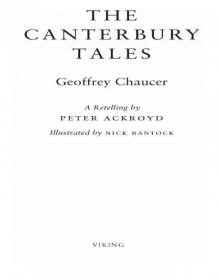 The Canterbury Tales
The Canterbury Tales J. M. W. Turner
J. M. W. Turner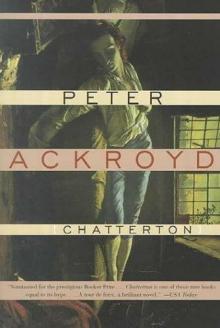 Chatterton
Chatterton The Canterbury Tales – A Retelling
The Canterbury Tales – A Retelling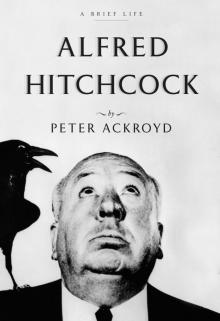 Alfred Hitchcock
Alfred Hitchcock Three Brothers
Three Brothers Wilkie Collins
Wilkie Collins Venice
Venice Poe
Poe The Lambs of London
The Lambs of London London
London Queer City
Queer City Revolution, a History of England, Volume 4
Revolution, a History of England, Volume 4 Venice: Pure City
Venice: Pure City Foundation
Foundation Thames
Thames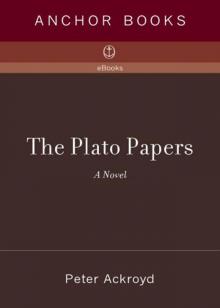 The Plato Papers
The Plato Papers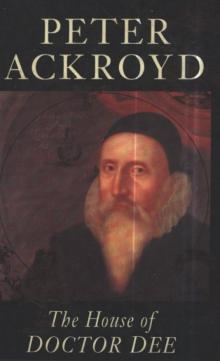 The house of Doctor Dee
The house of Doctor Dee Rebellion: The History of England from James I to the Glorious Revolution
Rebellion: The History of England from James I to the Glorious Revolution Albion: The Origins of the English Imagination
Albion: The Origins of the English Imagination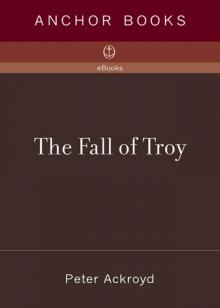 The Fall of Troy
The Fall of Troy The Death of King Arthur
The Death of King Arthur The Trial of Elizabeth Cree
The Trial of Elizabeth Cree London: The Biography
London: The Biography The Casebook of Victor Frankenstein
The Casebook of Victor Frankenstein Hawksmoor
Hawksmoor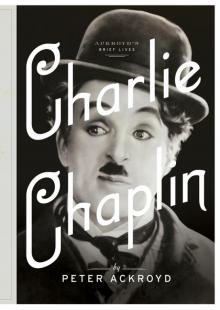 Charlie Chaplin
Charlie Chaplin London Under
London Under